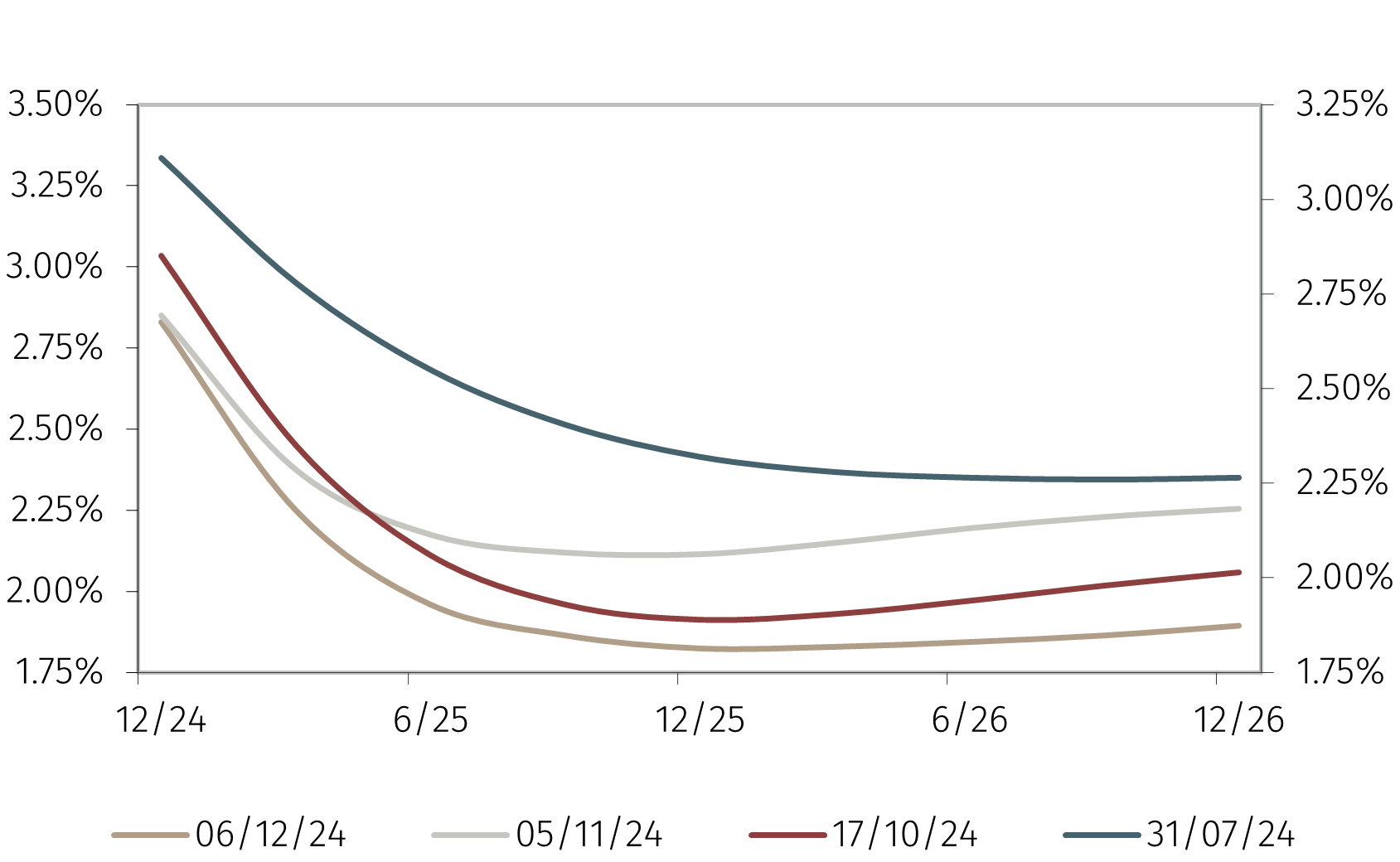Economists Urge ECB Caution: Avoiding Rate Cut Delays

Table of Contents
The Risks of Premature ECB Rate Cuts
Cutting interest rates too soon carries significant risks for the Eurozone economy. Acting prematurely, before inflation is decisively under control, could have several detrimental consequences:
-
Stubbornly High Inflation: Premature rate cuts risk reigniting inflationary pressures. If the ECB lowers rates while inflation remains elevated, the cost of borrowing could decrease, potentially stimulating demand and further fueling price increases. This could lead to a vicious cycle, making it harder to bring inflation back to the ECB's target of 2%.
-
Weakening of the Euro: Lower interest rates can make the Euro less attractive to international investors, potentially leading to a depreciation of the currency. A weaker Euro can further increase import prices, adding to inflationary pressures and negatively impacting the purchasing power of Eurozone citizens. This effect on the euro exchange rate is a critical factor to consider.
-
Increased Risk of Asset Bubbles: Lower interest rates can incentivize increased borrowing and investment, potentially leading to the formation of asset bubbles in various sectors. These bubbles are inherently unstable and can burst dramatically, causing significant economic disruption when they deflate. The ECB must carefully assess the risk of asset bubbles when considering rate cuts.
-
Loss of Confidence in the ECB's Monetary Policy: If rate cuts are perceived as premature or ineffective, it could undermine confidence in the ECB's ability to manage the economy. This loss of confidence could further destabilize financial markets and hamper economic recovery. Maintaining credibility is crucial for the ECB's monetary policy effectiveness.
Economic Indicators Suggesting Caution
Several key economic indicators suggest that a cautious approach to rate cuts is warranted. Economists are closely monitoring:
-
Inflation Rates (CPI, Core Inflation): While headline inflation may be showing signs of easing, core inflation (which excludes volatile food and energy prices) remains stubbornly high in many Eurozone countries. This indicates persistent underlying inflationary pressures that require careful consideration before cutting rates.
-
Unemployment Figures: While unemployment rates have generally remained low, recent data warrants further monitoring. Any significant increase in unemployment could signal a weakening economy, making rate cuts less desirable.
-
GDP Growth: GDP growth figures offer insights into the overall health of the Eurozone economy. A slowdown or contraction in GDP growth would suggest caution against rate cuts, as it could exacerbate economic weakness.
-
Consumer Confidence: Consumer confidence indicators are crucial for understanding consumer spending and overall economic sentiment. A decline in consumer confidence could signal decreased demand and justify a more conservative monetary policy. The analysis of this inflation data, GDP growth rate, unemployment rate, and consumer sentiment provides a more comprehensive understanding of the economic situation.
Alternative Policy Options to Consider
Instead of resorting to immediate rate cuts, the ECB has several alternative policy tools at its disposal:
-
Targeted Lending Programs: These programs can provide liquidity to specific sectors of the economy without broadly lowering interest rates. This allows the ECB to address specific economic vulnerabilities without risking broader inflationary consequences.
-
Forward Guidance on Future Monetary Policy: Clear communication about the ECB's future policy intentions can influence market expectations and avoid unnecessary volatility. This can help to manage inflation expectations and avoid the need for abrupt rate changes.
-
Quantitative Easing (QE) Adjustments: The ECB can adjust its QE program to fine-tune liquidity in the financial system. Modifying the pace or composition of QE offers a nuanced approach to monetary policy without relying solely on interest rate changes. Understanding these monetary policy tools is vital for informed analysis.
The Importance of a Data-Driven Approach
The ECB's decisions must be firmly rooted in thorough data analysis. Misinterpreting economic signals can lead to incorrect policy decisions with severe consequences. A data-driven approach ensures that policy adjustments are appropriate for the current economic reality. Transparency and clear communication from the ECB are essential to build confidence and maintain stability.
Avoiding ECB Rate Cut Delays: A Crucial Step for Economic Stability
Premature ECB rate cuts risk exacerbating inflation, weakening the Euro, creating asset bubbles, and undermining confidence in the ECB's monetary policy. A cautious and data-driven approach, utilizing alternative policy tools as needed, is crucial for maintaining economic stability. The potential negative consequences of hasty action far outweigh any perceived short-term benefits.
Stay informed about ECB decisions and the ongoing debate surrounding ECB rate cut delays. Further research and engagement with economic news and analysis will enable you to better understand the potential impact of ECB monetary policy decisions on the Eurozone economy. Follow the developments closely to gain a deeper understanding of this critical aspect of the Eurozone's economic future.

Featured Posts
-
 Rosita Sweetman Constance Wildes Sacrifice For Oscars Fame
May 31, 2025
Rosita Sweetman Constance Wildes Sacrifice For Oscars Fame
May 31, 2025 -
 Last Two Ecb Rate Cuts Economists Sound Alarm On Delays
May 31, 2025
Last Two Ecb Rate Cuts Economists Sound Alarm On Delays
May 31, 2025 -
 Griekspoor Stuns Zverev In Indian Wells Second Round
May 31, 2025
Griekspoor Stuns Zverev In Indian Wells Second Round
May 31, 2025 -
 Ais Learning Limitations Promoting Ethical And Responsible Ai Practices
May 31, 2025
Ais Learning Limitations Promoting Ethical And Responsible Ai Practices
May 31, 2025 -
 Federal Charges Millions Made From Executive Office365 Account Hacks
May 31, 2025
Federal Charges Millions Made From Executive Office365 Account Hacks
May 31, 2025
